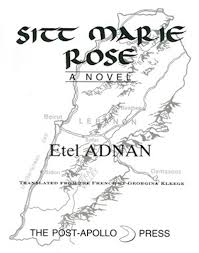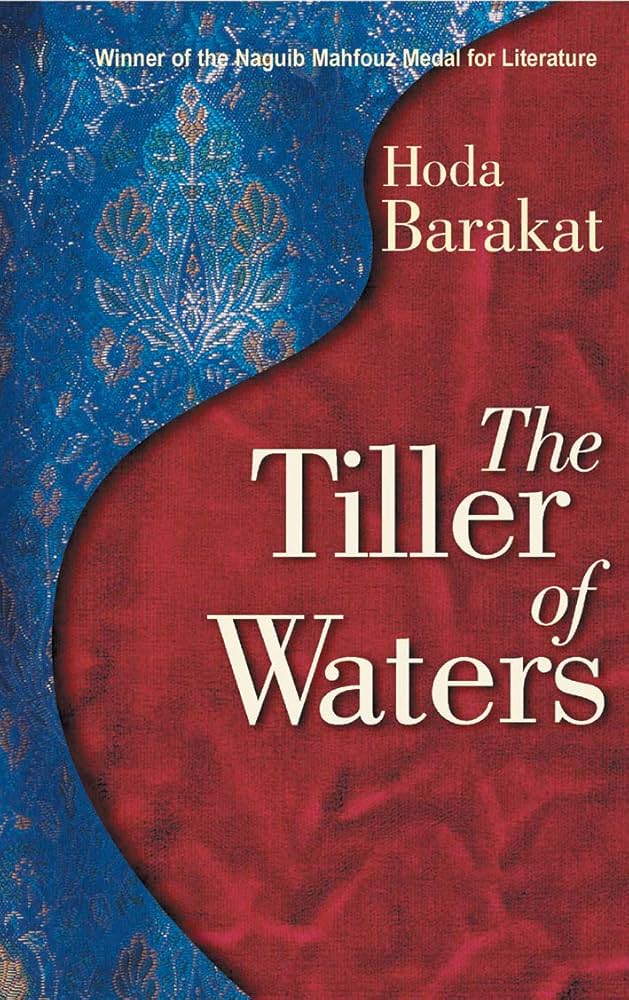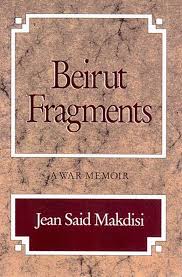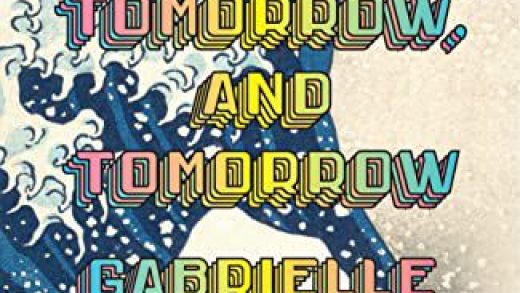The Lebanese civil war was a series of conflicts that lasted from 1975 until 1990, claiming an estimated 150,000 lives. Although it assumed a sectarian face, there were a number of underlying causes, including economic and political inequality, a power-sharing structure that privileged Christian elites, and a widening rift between those who supported the Palestinian resistance in Lebanon and those who opposed it.
I was twelve years old when the war broke out, old enough to remember what it was like to be alive at the time. Beirut, where I lived, was divided between East and West Beirut, codes for predominantly Christian and Muslim Beirut, respectively. Living in East Beirut was like living inside a bubble, where people banded together and dissent was uncommon and mostly veiled. My parents rejected sectarianism, and I knew I was missing half the story.
My novel We Walked On is about the experience of living in wartime: the daily violence, the way in which war determines the course of each day, and the pockets of relative normalcy during the lulls when people try to rebuild their lives, only to watch them fall apart when the fighting resumes. I wanted to show the war’s devastating mental effects, how enmities grow and fear drives even seemingly decent people to commit acts of cruelty. Despite resisting the sectarianism that swept the country, 14-year-old Rita and her Arabic teacher, Hisham, who live in East Beirut, find themselves occasionally expressing their allegiance to the tribe: Rita betrays a friend, and Hisham pressures his brother to leave West Beirut, where he lives with his family. Both of these characters have ties that fall outside of the clan paradigm—Rita’s father grew up in Palestine, and Hisham’s brother joins the leftist militia—making them insiders/outsiders in their community and complicating their understanding of the exclusionary ideologies that fuel war.
The books featured below depict characters who cross lines and form affiliations across the divided city. While the majority take place during the war, Alameddine’s and Ghoussoub’s works are set after the war but remain shaped by it. Here are 8 books about the Lebanese civil war:

Sitt Marie-Rose by Etel Adnan; Translated by Georgina Kleege
Sitt Marie Rose is based on the real-life kidnapping, torture, and murder of Marie-Rose Boulos, a Christian Syrian-Lebanese woman who worked with Palestinian refugees. The novel, written in the first-person, describes her trial and execution. Etel Adnan’s titular protagonist crosses multiple lines. She defies her community by frequently traveling between Beirut’s Christian East and Muslim West. She lives in a Palestinian refugee camp in the West with her three children and her Palestinian lover, and runs a school for the deaf-mute in the East, where she is eventually kidnapped and killed for refusing to change her ways. Her insistent refusal to choose between two camps and give in to prescriptions of gender, class, and ethnicity is a heroic act of resistance that results in her tragic death.
An Unnecessary Woman by Rabih Alameddine
Aaliya, Alameddine’s brilliant protagonist, is 72 years old and has been living alone in her Beirut apartment for years, ruminating about literature, her tumultuous past, and memories of the civil war. Once a bookshop manager, divorced, alienated from her family, prickly and erudite, she spends her time secretly translating beloved classics (War and Peace, Austerlitz…) into Arabic. Her estrangement from her family and voluntary seclusion in a society centered around community ties, her self-sufficiency and proud “spinsterhood” (she was briefly and unhappily married), her intellectual pursuits and rich and often hilarious inner world (she refers to her ex-husband as “the impotent insect”) make her an unconventional character who always strives to live by her own rules.
The Hakawati by Rabih Alameddine
Hakawatis, Arabic for oral storytellers, are a dying breed in the Middle East. They typically perform in coffee houses, dragging their stories out over weeks or months, captivating their audiences and keeping them coming back for more. Various adjectives have been used to describe Alameddine’s novel: spellbinding, inventive, captivating, exuberant …. It’s prodigious, a riot of a book, and I’m a fan.
The year is 2003. Osama al-Kharrat returns from Los Angeles, where he has lived for years, to his native Lebanon to visit his dying father. The civil war has been over for years, but the city still bears its scars. Osama’s grandfather was a hakawati. The family name, al-Kharrat, translates to fibber, teller of tall tales, a fiction writer of sorts. Soon, Osama finds himself entertaining the family with his storytelling, twining stories within stories—djinns, demons, imps, the Crusaders, al-Mutannabi, Fatima, and myriad others. The Hakawati is a testament to the power of storytelling to entertain, distract from the difficult world, and bring the past back to life while freely embroidering and rewriting it. It might be a sly nod to fiction’s seductive powers and its ability to uncover truths that touch our hearts. The civil war lurks in the background, and the visible wounds it has left on the city, along with the father’s impending death, may be the impetus for the storytelling as a kind of reconstruction and balm. Alameddine’s hakawati, even as he references the war in his tales, situates it within a broader context, making it one of the many chapters in the history of a rich and vibrant Middle East.

The Tiller of Waters by Hoda Barakat; Translated by Marilyn Booth
Barakat’s novel about a lone man living in war-torn Beirut during the civil war is both an elegy to the city and a tribute to human endurance in the face of calamity. Niqula Mitri has lost both of his parents to death; his beloved Kurdish maid, Shamsa, has disappeared; and refugees now live in his Beirut apartment. He takes refuge in his father’s bombed-out fabric store, where he discovers that the whole inventory has miraculously survived intact in the basement. He forages for food in the ruins of the deserted city while dodging a pack of wild dogs and alternating between past and present, reality and delusion.Through his ramblings, he summons back the lost Shamsa (who intones, “Come back to me, and teach me velvet”), describes to her the science and history of textiles, and delves into Kurdish mythology, Arabic and Armenian civilizations, and more. Fabric represents the weaving of stories as a means of survival in a shattered world. Mitri’s wanderings across familiar landmarks of the bombed-out city are haunting and achingly beautiful for anyone who has known and loved Beirut.
The Penguin’s Song by Hassan Daoud; Translated by Marilyn Booth
In Hassan Daoud’s The Penguin’s Song, a family of three displaced by war spirals into decline. Forced to flee their home in embattled Beirut, they spend their days longing for their old life while struggling to find a meaningful anchor in their new one.The mother regularly leaves the apartment to wander around in frustration, the father stops working due to failing health, depleting their savings, and the twenty-one-year-old son, whose physical deformity causes him to walk like a penguin, narrates the family’s demise while pining for a young neighbor. The omission of proper names reduces the family members to near-anonymity, underlining their growing dehumanization. Their cramped new apartment reflects the war-torn world they inhabit, with ever-increasing walls and barriers erected in the name of kinship to the clan.Their only way out is to turn to their memories and fantasies, as losses pile up around them. Although the family lives in relative physical safety in their sheltered apartment, their mental state deteriorates rapidly. Daoud’s novel is a scathing critique of war, depicting it as an insidious sickness that causes devastating damage in its wake.
Leaving Beirut by Mai Ghoussoub
Multilingual, multi-talented (author, artist, and playwright), globetrotter, human rights activist, and co-founder of Saqi Books, Mai Ghoussoub, who died in 2007, eschewed boundaries. Her book is a creative blend of memoir, fiction, and personal reflections on war and its consequences.
The reflections are presented in the book as “letters” addressed to Mrs. Nomy, her childhood French teacher at the Lycee in Beirut. When Ghoussoub was twelve, she wrote an essay for Mrs. Nomy, using her best writing skills to express her wish to get even with friends who had wronged her. Instead of being impressed, Mrs. Nomy gave her a low grade and condemned her behavior, claiming that “revenge was the meanest of human sentiments.” Back in Beirut after a stay in Europe, the narrator in Ghoussoub’s nuanced book grapples with the problems facing post-war Beirut, focusing on the notion of revenge juxtaposed with the general amnesia that the Lebanese have readily adopted. What unfolds is a series of fascinating vignettes about real or imagined people from wartime Beirut that she uses to raise complex questions about the challenges of reconstruction, as well as the temptations of forgetting and avoiding the painful job of reckoning with the past.
Little Mountain by Elias Khoury; Translated by Maia Tabet
“They called it Little Mountain. And we called it Little Mountain” begins Elias Khoury’s first-person short novel set around the outbreak of the Lebanese Civil War. But the mountain is not a mountain: “One hill, several hills, I no longer remember and no one remembers anymore.” This, combined with other examples of elusive narration, such as shifts in tense and pronouns, creates a destabilizing effect, accentuated by the repetitive, dreamlike style that loops and fractures across the pages. The novel begins with the narrator recalling his childhood in the “little mountain,” the Christian neighborhood of Ashrafiyya east of Beirut. Later chapters focus on the conversations and ramblings of fighters, before concluding with a sequence of disjointed memories in a Paris metro. Khoury’s use of repetition and fragmentation creates gaps in the narrative, allowing boundaries to dissolve and breaches to emerge. The novel’s fragmentary structure allows meaning to arise in the intervals between ideas, enabling a reality that is too fluid to be forced into the black-and-white imperatives of war.

Beirut Fragments: A War Memoir by Jean Said Makdisi
Makdisi was born in Jerusalem and grew up in Cairo before attending college in the United States. In 1972, she moved to Beirut with her Lebanese husband. Three years later, the civil war erupted. Her memoir offers an intimate account of those years, capturing the horrors of war and its impact on both personal lives and the fabric of the city. Makdisi vividly describes the challenges of raising a family and recreating life amidst relentless violence. Residing in Ras Beirut, a neighborhood in West Beirut known for its peaceful coexistence of people from different religions, she mourns the religious intolerance that consumed the country. However, she finds solace in the fact that some of West Beirut’s tolerance and diversity has managed to endure, even as it suffered a similar fate. One chapter delves into the devastating consequences of the 1982 Israeli invasion and the subsequent siege of West Beirut, resulting in the deaths and injuries of nearly 50,000 people. Through her memoir, Makdisi offers a valuable perspective on life during times of war, the resilience of human connections, and her unwavering love for a city that has persevered through the harshest of conditions.
The post 8 Books About the Lebanese Civil War appeared first on Electric Literature.
Source : 8 Books About the Lebanese Civil War










